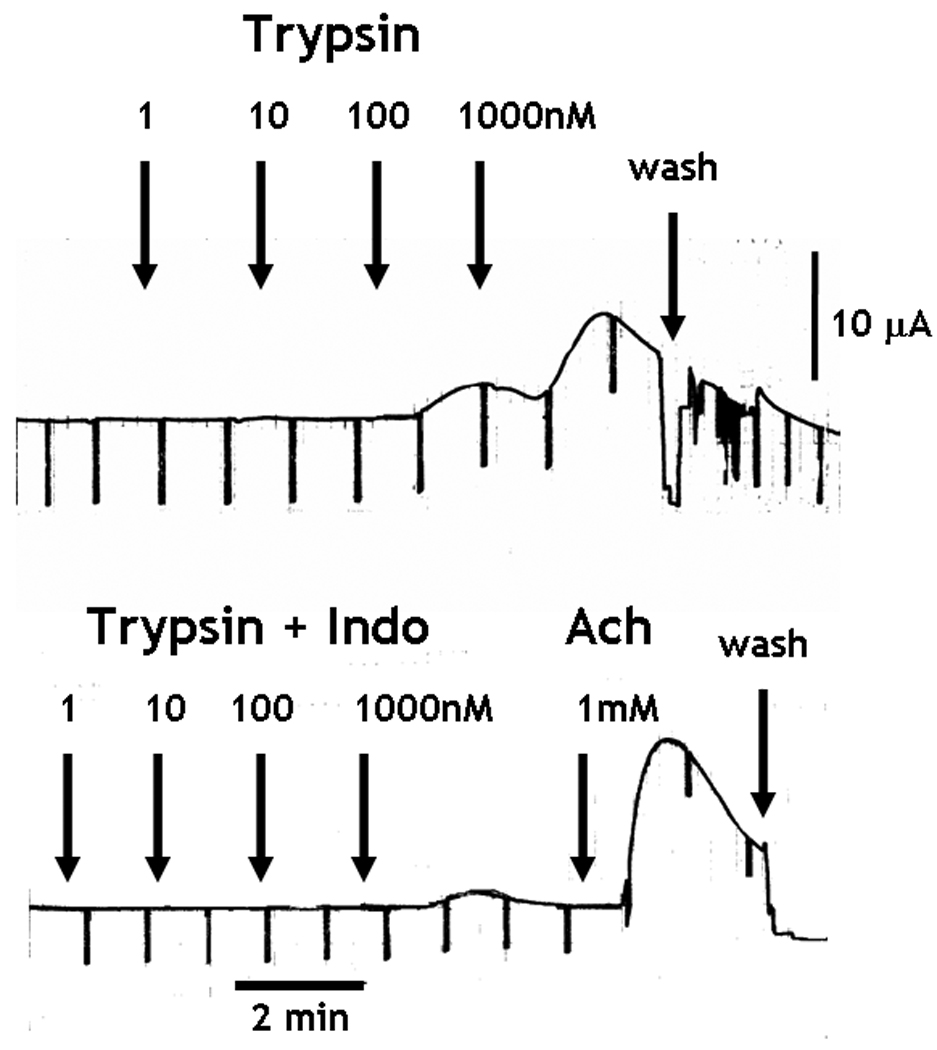Figure 4.


PAR2 activation-induced intestinal epithelial chloride secretion was dependent on COX generation of PGE2, but was independent of enteric nerves. (A and B) The cumulative addition of trypsin to the serosal side of mucosae mounted in Ussing chambers induced a concentration-dependent increase in Isc. (A) Prior exposure to trypsin abolished the response to a second challenge with trypsin 25 minutes later. The increase in Isc was unaltered by 1µM TTX, (B) but was abolished in the presence of 10µM indomethacin. The tissue responded to acetylcholine confirming the viability of the preparation. (C) H. polygyrus (day 14 post infection), N. brasiliensis (day 9 post infection), and in vivo IL-13 treatment (7 days) all significantly inhibited epithelial cell response to PAR2 agonist, SLIGRL. Responses to trypsin were reduced only by H. polygyrus infection *p<0.05 vs respective control.

